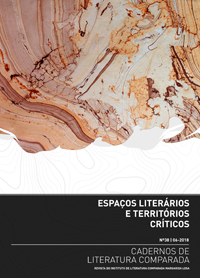O baldio como espaço de resgate afetivo
DOI:
https://doi.org/10.21747/21832242/litcomp38a10Keywords:
realism, rarefaction of reality, scenography, human, no-man’s-land, becomingAbstract
The fictional works of Maria Velho da Costa generate multiple subjective territories where, by the means of different enunciative voices, alternative world visions are displayed and new inquiring or problematizing spaces are open, where life and the human are questioned.
Through a rarefaction of the referential coordinates or, as Manuel Gusmão calls it, through a «shift of the reference», by constructing scenographies that mainly allude to the world instead of representing it, this fiction opens border and interstitial spaces that suggest new human mappings.
The strategy of toning down the reality, as it frees the text from its factual chains, creates the necessary detachment to allow the creation of atmospheres of a certain wandering, of no-man’s lands suitable to the emergence of shading characters, receptive to new relational and affective pacts. By exploring the potentialities of concepts such as liminarility, neighbourhood, interstice and latency, conditions are created to put the sublimation of disaffection in perspective and to consider alternatives to the paths of existential devastation.
As it figures new human geographies, in plausible and porous worlds where the imaginary and the psychotic, the real and the unlikely, the human and the animal interact, the fiction of Maria Velho da Costa offers a fecundating exercise of hybridity that deals with the author’s fundamental topic: the emotional reality of the affection.


